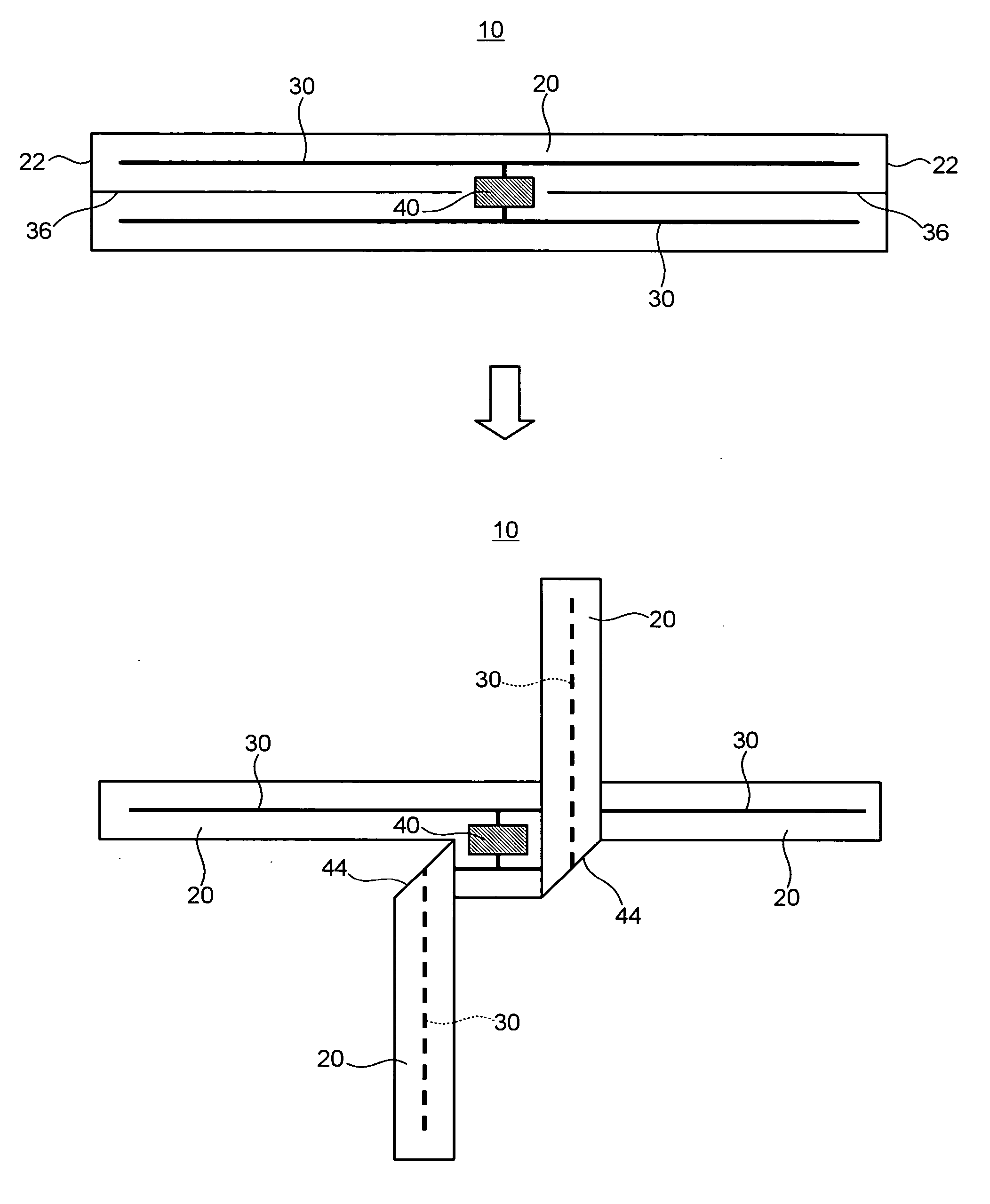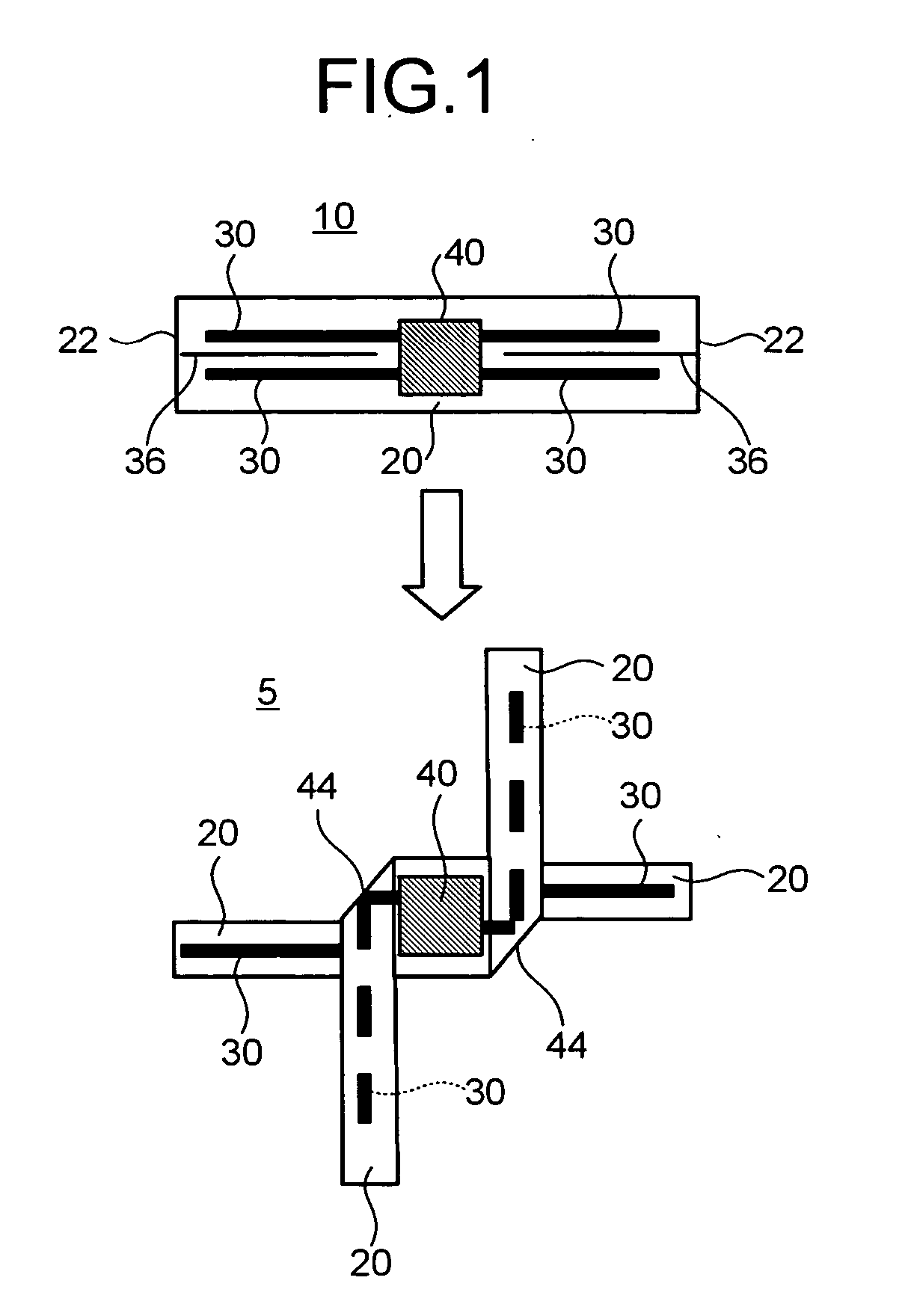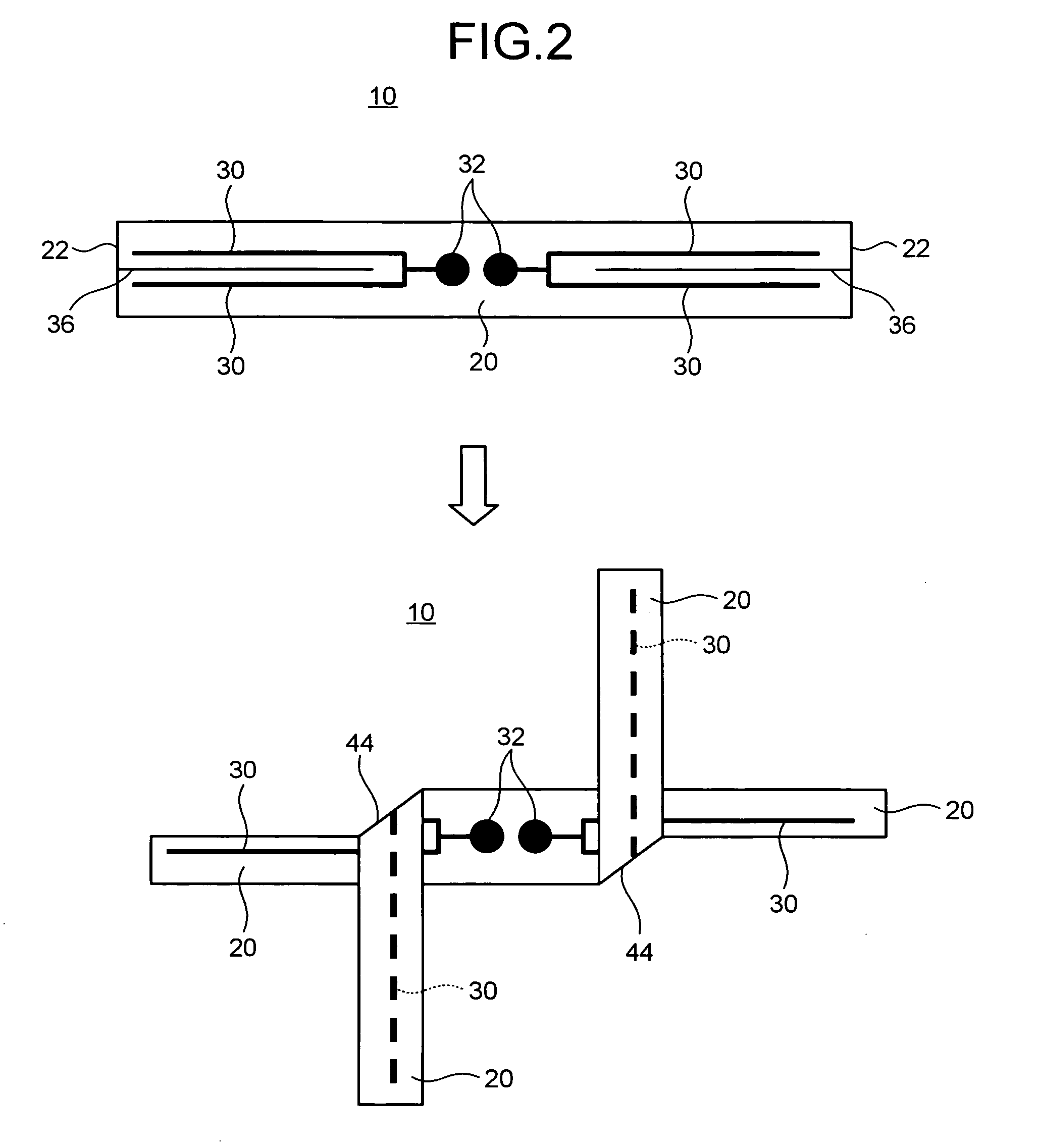RFID tag, RFID-tag antenna, RFID-tag antenna sheet, and method of manufacturing RFID tag
a technology of rfid tag and antenna, which is applied in the direction of antenna details, instruments, antennas, etc., can solve the problems of increasing the length of the antenna, increasing the weight of the film base, and limiting the improvement of the reception sensitivity of polarized waves and directivity of the plane antenna
- Summary
- Abstract
- Description
- Claims
- Application Information
AI Technical Summary
Benefits of technology
Problems solved by technology
Method used
Image
Examples
first embodiment
[0051]FIG. 1 is a top plan view of an RFID tag according to the present invention, illustrating a process of forming the RFID tag. FIG. 2 is a top plan view of an RFID tag antenna, illustrating a process of folding the antenna. FIG. 3 is a top plan view of an RFID-tag antenna sheet.
[0052] As shown in FIG. 1, an RFID tag antenna 10 that forms an RFID tag 5 includes a film base 20, transmission / reception antenna patterns 30 that are formed in two rows in parallel on the film base 20, a cut line 36 formed on the film base 20 between the adjacent antenna patterns 30 along the antenna patterns 30 from the inside of the film base 20 to reach an external edge 22, and an IC chip 40 that is electrically connected to the antenna patterns 30.
[0053] In the present specification, the film base 20 with the IC chip 40 mounted thereon and that without mounting the IC chip 40 are both called an “RFID tag antenna”.
[0054] The film base 20 is made of flexible thermoplastics. In other words, PET, poly...
second embodiment
[0072]FIG. 4 is a top plan view of an RFID tag according to the present invention, illustrating a process of forming the RFID tag. FIG. 5 is a perspective view of the RFID tag. FIG. 6 is a perspective view of an RFID tag that is incorporated in a golf ball. In the explanation below, like reference numerals designate like or similar parts as those already explained and a redundant explanation is omitted.
[0073] An RFID tag antenna 10 according to the second embodiment is different from that according to the first embodiment in the following points. As shown in FIG. 4 and FIG. 5, the RFID tag antenna 10 includes the transmission / reception antenna patterns 30 that are formed in three parallel rows on the film base 20, and the cut lines 36 that are formed on the film base 20 between the adjacent antenna patterns 30 along the antenna patterns 30 from the inside of the film base 20 to reach the external edge 22. The three-row antenna patterns 30 formed on the film base 20 are folded in a p...
eighth embodiment
[0094] A main difference is that RFID tag antenna 10 has adhesive pads 34a and 34b, which are coated with conductive adhesive exhibiting a predetermined adhesive force by pressing and heating, formed at the ends of the antenna patterns 30.
[0095] As shown in FIG. 12 and FIG. 13, a set of film bases 20 are folded at the folding sections 44 using the cut lines 36, and at the same time, another set of film bases 20 are also bent. The adhesive pads 34a and 34a are adhered together, and the adhesive pads 34b and 34b are adhered together, on the film bases 20 respectively.
[0096] By bonding the ends of the film base 20 together, one loop antenna 38 is formed above the IC chip 40, and another loop antenna 38 is formed below the IC chip 40. In FIG. 13, a state after the adhesion between the adhesive pads 34a and 34a is shown using an imaginary line.
[0097] As explained above, according to the eighth embodiment, the RFID tag 5 can secure a sufficiently high production yield from the material...
PUM
 Login to View More
Login to View More Abstract
Description
Claims
Application Information
 Login to View More
Login to View More - R&D
- Intellectual Property
- Life Sciences
- Materials
- Tech Scout
- Unparalleled Data Quality
- Higher Quality Content
- 60% Fewer Hallucinations
Browse by: Latest US Patents, China's latest patents, Technical Efficacy Thesaurus, Application Domain, Technology Topic, Popular Technical Reports.
© 2025 PatSnap. All rights reserved.Legal|Privacy policy|Modern Slavery Act Transparency Statement|Sitemap|About US| Contact US: help@patsnap.com



